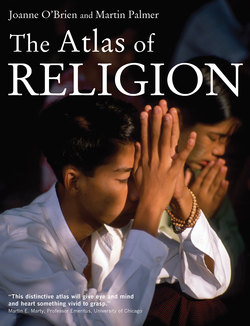Читать книгу The Atlas of Religion - Joanne O'Brien - Страница 13
На сайте Литреса книга снята с продажи.
ОглавлениеPart One
BEGINNINGS
Religions arise in a diversity of ways. Some, such as Daoism, emerge from the lifestyles and beliefs, environment and landscape of the people. Some, such as Zoroastrianism, are believed to have been revealed. Yet others develop from the spiritual and philosophical experiences of the founder, such as happened in the case of Buddhism. Some remain rooted in a given location – such as Shinto in Japan. Others have spread around the world. The rise of missionary religions (starting with Buddhism in the 3rd century BCE), followed by Judaism, Christianity and Islam, are the best-known examples. Some religions have only recently started to move beyond their homelands. Hinduism and Daoism are the best-known examples of this. Yet others have to all intents and purposes been reinvented – Shamanism, for example, is now a term used to describe a vast plethora of different practices around the world. Within each major religion, differences of opinion, often over issues of authority and power, led to splits. These traditions themselves then frequently gave rise to further schisms. For example, Anglicanism split away from the Catholic Church and then Baptists and Methodists split from the Anglican Church. Religions also spawn new religions, as Judaism has in relation to Christianity. Although Islam established itself as an independent religious tradition, for several centuries some Christians viewed it as a schism within Christianity. To this day, Jains sometimes find themselves viewed as Hindus by Hindu organizations. While occasionally religious traditions reunite, usually it is the other way round and the number and range of diverse traditions within each religion keeps growing. While the religious maps of Europe and Asia have remained almost unchanged for centuries, those of the Americas, Africa and much of the Pacific have been radically transformed in the last 200 years, and are still in a state of flux. They bear witness to the trade winds, and to the rise of Europe as a spiritual as well as economic and military power. As that power wanes, newer branches of Christianity in particular are taking on an autonomy that is often challenging to the theologies and ideas of the older European Churches. Similar trends can be seen in other missionary religions, such as Islam, and in particular Buddhism as it spreads into the Western world.
Lotus flower, symbol of wisdom and clarity, arising out of the cloudy waters of ignorance
